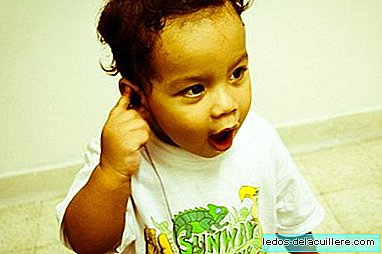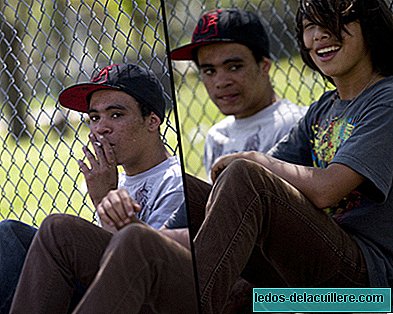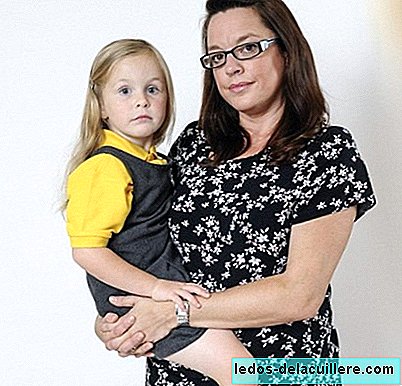
In case of suspicion, make a proper hearing impairment assessment It is a key and very important point. With the different tests that can be performed, the degree and type of hearing impairment can be characterized and the causes that caused it can be determined.
In this way, we can obtain the necessary data to propose an early and adequate treatment to the needs of the child with some type of hearing impairment. In addition, the auditory evaluation will also help when the professional informs the family of progress, social resources and other benefits.
The scientific advances experienced have allowed very important improvements in the early identification of hearing problems, in clinical actions, in the available technological resources and in the effectiveness of therapeutic interventions. Let's now look at the most common tests performed on children to detect some type of hearing impairment.
First tests
Before beginning the auditory tests as such, it is important that the specialist takes note of the clinic history of the child in order to verify the existence or not of risk factors in personal and family history. The clinical history also seeks to rule out pathologies associated with hearing impairment, as well as physical abnormalities that help to suffer from this type of sensory disturbance.
The genetic and radiological studies They also provide great information, since you can check if the deficit is due to any mutation in the genes or by the existence of some type of tumor. On the other hand, ruling out some type of infection (for example, cytomegalovirus) during pregnancy related to hearing impairment is also important.
Objective audiometric tests
This type of hearing tests do not require the collaboration of the child, so they are very useful in very young children, with associated sensory problems (for example, blindness) or who collaborate very little because the situation is strange and they are very nervous, even with the presence of their parents.
Among the most frequently used tests are:
- Impedance measurement: this test includes, in turn, tympanometry (test in which the mobility of the eardrum is evaluated) and the stapedial reflex test (this reflex occurs when it receives signals above 70 decibels, so it acts as a defense mechanism against loud sounds, fixing the ossicles chain of the inner ear). This test is performed to detect possible conduction hearing loss.
- Acoustic Otoemissions (OAS): This test is based on the existence of a low intensity spontaneous sound that is produced in the inner ear, so that a sound will be sent to this part which will be answered as an echo, collecting this data and processing by computer.
- Brain Trunk Auditory Evoked Potentials (PEATC): It is the most commonly used test to determine the baby's hearing level with some precision, no matter if he does not collaborate and in a painless way for him. The test consists of providing a series of sound stimuli and collecting, by means of electrodes placed in certain parts of the child's head, the bioelectric signals that sound causes in various brain sections of the auditory pathways. The absence or existence of these signals will confirm the existence or not of a hearing deficit.
Subjective audiometric tests
Unlike the previous ones, this type of tests allow an auditory evaluation of the child as long as he participates in the exploration. This gives information about the sensitivity, functional status of the auditory system or the child's ability to use hearing in the understanding of some task.
Among these tests, which for obvious reasons can only be performed from certain ages, we find:
- Conditional Orientation Reflex (ROC): This test is usually performed between 6 months and three three years of age. Through a theater, a sound is produced (several times) in one of the two speakers located on the sides of the child while a moving doll appears on the same side. If the child hears, he will wait for the appearance of the sound as he has learned (by conditioning) that the doll will appear later.
- Sound toys test: before a sound, the child places a cobo of colors on top of another to make a tower. Again, by conditioning, if the child hears something again he will place another cube; If there is no sound, it will not.
- Peep show: through this test, when the child hears a sound you must press a button, which will make an attractive stimulus appear for him (an image on television, a train that starts up in a landscape ...) If the child presses on absence of sound, nothing happens.
- Image test: in a soundproof booth, the child is placed on a table in front of a series of drawings. Using a microphone, and at different intensities, the images are named, waiting for the child to identify them.
As you can see, the general objective of the hearing impairment assessment is to check the presence or absence of some kind of hearing damage. In the event that it exists, to be able to determine its scope, as well as the existence of some type of usable residual hearing
However, it is important to know that, both for the evaluation and for the subsequent intervention, it is very important that all professionals work with the child collaborate closely with each other, without forgetting the fundamental role of the family throughout this process.












